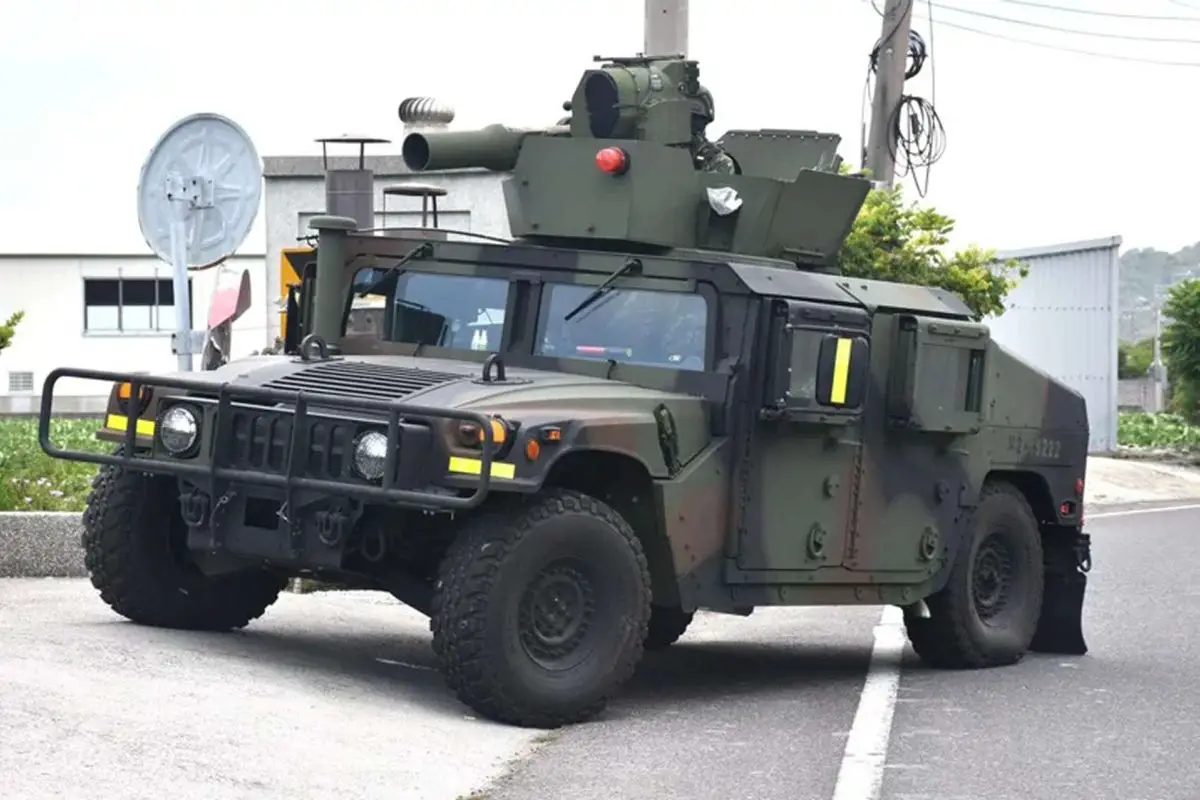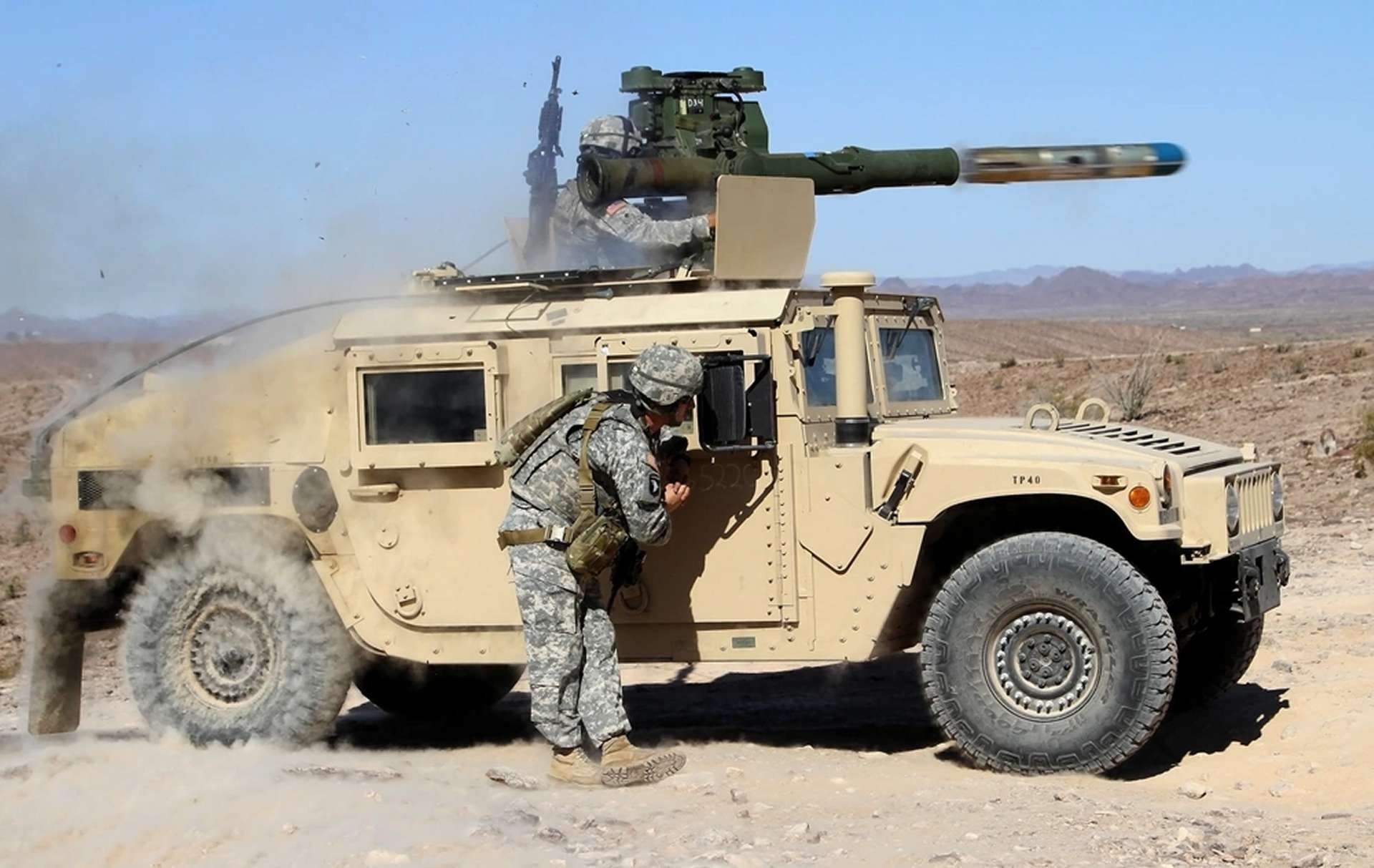Breaking News
Taiwan's 586th Brigade deploys US-supplied M1167 TOW missile carriers in 2024 Han Kuang exercise.
On July 23, 2024, during the 2024 Han Kuang Exercise, the Taiwanese Army's 586th Brigade deployed its newly acquired M1167 TOW missile carriers equipped with Improved Target Acquisition System (ITAS) launchers capable of launching TOW 2B (BGM-71F-3-RF) missiles. The brigade conducted tactical maneuvers in central Taiwan with these newly received vehicles and ITAS launchers, marking their first appearance in any exercise.
Follow Army Recognition on Google News at this link

The 586th Brigade conducted tactical maneuvers in central Taiwan with these newly received M1167 TOW missile carriers, marking their first appearance in any exercise. (Picture source: UDN/hojiyi)
The 2024 Han Kuang military exercise, Taiwan's major annual defense drill, began on July 22 and will last for five days. This year's exercise emphasizes a more realistic approach by forgoing pre-rehearsals and adopting unscripted scenarios to better simulate actual combat conditions. The drills involve various military assets, including F-16s, CM32, CM33, and CM34 armored vehicles, M60A3 tanks, and C130 transport aircraft, deployed to different bases across Taiwan. Notably, live-fire exercises are conducted only on the outer islands of Kinmen, Matsu, and Penghu, while exercises on Taiwan's main island exclude live ammunition, focusing on force preservation, critical infrastructure protection, and decentralized command operations.
The exercise includes night-time drills and tests the military's response capabilities under conditions of lost communication with central command. This adjustment reflects Taiwan's response to the increasing frequency of Chinese military activities near its borders, such as air and naval operations. The drills aim to improve the military's ability to conduct multi-point simultaneous defenses and ensure troops can operate independently if an invasion occurs. Concurrently, Taiwan is conducting air raid exercises to enhance civil defense preparedness, emphasizing missile and rocket attack alerts and the establishment of wartime disaster relief stations.

The 2024 Han Kuang military exercise includes night-time drills and tests the military's response capabilities under conditions of lost communication with central command. (Picture source: Taiwanese MoD)
As reported by Army Recognition on May 24, 2024, this deployment of newly-acquired M1167 HMMWV TOW missile carriers aligns with increased military activity by China around Taiwan, including extensive drills simulating strikes on key Taiwanese targets. This increase in military pressure follows Taiwanese President Tsai Ing-wen's visit to the United States, which Beijing viewed as provocative. In response, Taiwan has heightened its military alertness, deploying assets to monitor and counter these activities.
As of July 2024, the military situation between Taiwan and China is marked by increased Chinese military exercises around Taiwan, involving the navy, air force, and rocket force. These drills simulate various scenarios, including blockades and potential invasions, indicating a heightened level of preparedness and pressure on Taiwan. The Chinese Coast Guard has also intensified its presence around Taiwan’s outlying islands, conducting joint patrols and rapid reaction exercises near strategically important areas. These activities underscore China's ability to project power and maintain a continuous military presence in the Taiwan Strait.
Politically, the relationship between Taiwan and China remains strained, particularly following the re-election of Taiwan’s Democratic Progressive Party (DPP), which favors maintaining Taiwan's current autonomous status. China perceives this stance as a step towards formal independence, leading to increased diplomatic and military pressures from Beijing. China aims to diplomatically isolate Taiwan and reduce its international space, while Taiwan continues to strengthen its defense capabilities with support from allies, notably the United States. This dynamic creates a complex and tense political landscape, with both sides preparing for various contingencies while navigating a delicate balance in cross-strait relations.
To address these Chinese threats, Taiwan concluded several military sales with the United States, addressing a backlog of military equipment deliveries valued at $14.2 billion. This includes F-16 fighter jets, Patriot missile upgrades, Stinger missiles, and M1A2 Abrams tanks, which will replace older tank models. By the end of the year, Taiwan is expected to receive a total of 1,700 TOW 2B anti-tank missiles and 100 launchers, following delays due to the Covid-19 pandemic and initial testing failures. This acquisition is part of Taiwan's broader defense strategy in response to increasing Chinese military activities, which also includes a new 105mm 8x8 tank destroyer based on the future Clouded Leopard II vehicle.

Introduced in the 1990s, the TOW 2B can be launched from various platforms, including ground vehicles, helicopters, and portable launchers, with a maximum effective range of 3.75 kilometers, extendable to 4.5 kilometers in the TOW 2B Aero variant. (Picture source: US DoD)
The BGM-71F TOW 2B is an anti-tank guided missile developed by Hughes Aircraft, now Raytheon, for the U.S. military. The TOW system, which first entered service in the 1970s, has seen several upgrades, with the TOW 2B introduced in the 1990s. This version uses a "fly-over, shoot-down" method to target the top sections of armored vehicles with dual explosively formed penetrator (EFP) warheads, which detonate above the target to direct explosive force downward. The missile is 1.5 meters long, weighs 21.5 kilograms, and has a maximum effective range of 3.75 kilometers, extendable to 4.5 kilometers in the TOW 2B Aero variant.
The TOW 2B employs a guidance system that combines a laser profilometer and a magnetic sensor, along with an advanced thermal imaging sight and integrated optical system for target acquisition. It can be launched from various platforms, including ground vehicles, helicopters, and portable launchers, making it adaptable to different combat scenarios. The TOW 2B remains in service with several armed forces worldwide and has been used in multiple conflicts. Its guidance system allows operation in both day and night conditions, providing flexibility in deployment.
The M1167 is a variant of the High Mobility Multipurpose Wheeled Vehicle (HMMWV) designed for TOW missile deployment. It is used by the U.S. military for mobility and versatility in carrying and launching anti-tank missiles. The vehicle includes an Integrated Armor Package (IAP) for crew protection and features the M41 Improved Target Acquisition System (ITAS) for accurate missile targeting and launching. It weighs about 13,100 pounds (5,942 kg) and operates with a turbocharged diesel engine suitable for various terrains. Additionally, the M1167 has a secondary weapons mount for close-range defense, supporting weapons like machine guns on a 360-degree ring, and is utilized in various tactical situations for anti-armor functions and ground troop support.


























